We may not have the course you’re looking for. If you enquire or give us a call on 01344203999 and speak to our training experts, we may still be able to help with your training requirements.
Training Outcomes Within Your Budget!
We ensure quality, budget-alignment, and timely delivery by our expert instructors.
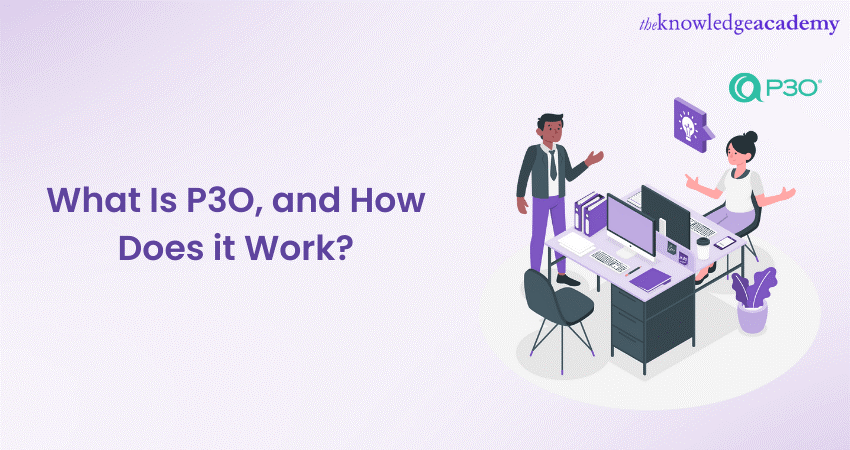
P3O is an acronym that stands for ‘Portfolio, Program, and Project Office’. It is a model that is designed as a management framework to assist organisations in effectively managing their portfolios, programs, and projects. Additionally, P3O originated as a response to an organisation’s need for centralised governance, strategic alignment, and resource optimisation. This blog discusses What is P3O, its framework for effective Project Management and its implementation to achieve better outcomes.
Table of Contents
1) Understanding What is P3O
2) How is P3O designed to work?
a) Key components of P3O
b) Functions of P3O
3) The key benefits of P3O for businesses
4) How can P3O be implemented?
5) Conclusion
Understanding What is P3O
As mentioned earlier, P3O stands for ‘Portfolio, Program, and Project Office’. It’s a management framework akin to having a powerhouse team that ensures everything runs smoothly and efficiently.
Additionally, P3O can be understood as the strategic command centre of an organisation. It brings all the different pieces together, aligning them with the organisation's goals and objectives. The alignment maximises value delivery and minimises risks along the way. P3O essentially provides a centralised structure that streamlines decision-making, optimises resource allocation, and manages risks effectively.
Furthermore, P3O helps organisations navigate through the complex world of portfolios, programs, and projects, making sure they are all heading in the right direction. It's like having a roadmap for your business success.

How is P3O designed to work?
P3O is designed to work by providing a structured framework that aligns Portfolios, Programs, and Projects with an organisation's strategic objectives. It establishes a centralised governance structure that facilitates effective decision-making, resource optimisation, and Risk Management.
More importantly, P3O aids organisations in streamlining their process of managing multiple initiatives by ensuring they are strategically aligned. This includes risks being identified and mitigated and resources being allocated optimally. It basically acts as a command centre, guiding organisations towards their goals and maximising value delivery.
Here are the two key points that describe in detail how P3O is designed to work:
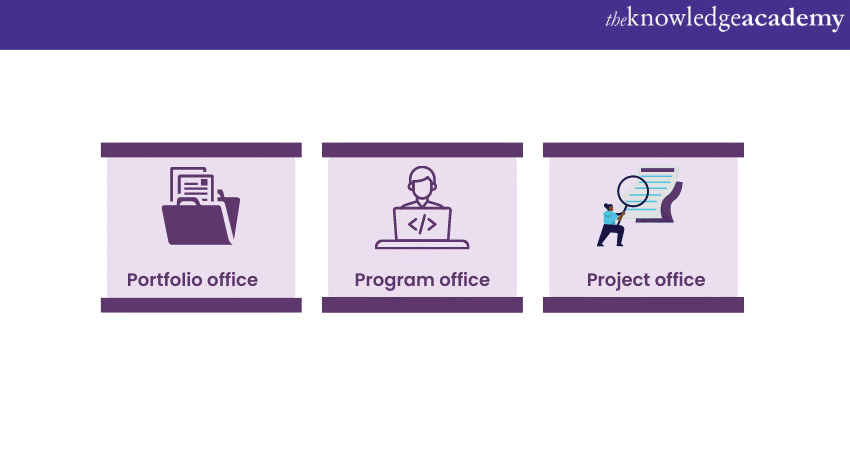
Key components of P3O
P3O typically comprises three essential components, each playing a crucial role in the management of Portfolios, Programs, and Projects. The list below gives you a closer look at these key components:
1) Portfolio Office: The Portfolio Office component has a focus on strategic decision-making, overseeing the organisation's Portfolio of Programs and Projects. Additionally, it ensures alignment with strategic objectives and manages business risks at a Portfolio level.
2) Program Office: The Program Office component focuses on managing Programs within the organisation and providing support to Program Managers. Moreover, it ensures the coordination and integration of Program activities, monitors Program performance and progress, and facilitates communication between Projects within the Program.
3) Project Office: The Project Office component has a focus on individual Projects, thus providing support and guidance to Project Managers. It also ensures adherence to Project Management processes, monitoring Project performance, and managing Project risks and issues.
Functions of P3O
P3O performs various functions to support the effective management of Portfolios, Programs, and Projects. Here are the key functions of P3O:
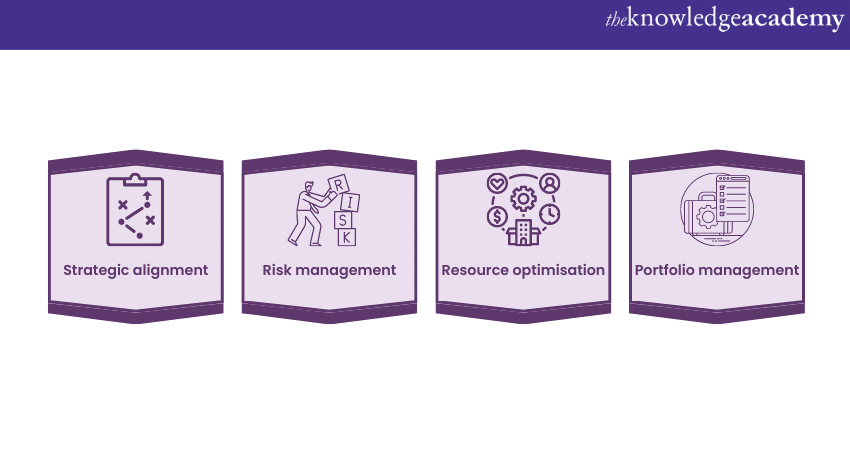
1) Strategic alignment: The function ensures the alignment of Portfolios, Programs, and Projects with the scope of the organisation's strategic objectives. Additionally, it also facilitates decision-making based on strategic priorities. The business’s strategic contribution of initiatives is also monitored and evaluated.
2) Risk Management: The function of Risk Management identifies, analyse, and manage risks at a Portfolio, Program, and Project level. It even implements strategies to mitigate risks for the organisation. Moreover, it provides a structured approach for the organisation to manage its risks across all its departments.
3) Resource optimisation: The function is intended to optimise resource allocation across the business Portfolios, Programs, and Projects. It also aids the business in balancing its resource demands and availability. Moreover, it ensures that the business resources are utilised in an efficient manner.
4) Portfolio Management: The function is intended to manage the Portfolio of Programs and Projects. It prioritises business initiatives based on their strategic importance. Furthermore, it works to monitor the Portfolio performance and benefits realisation. Benefits realisation typically helps teams to distinguish beneficial items from incorrectly proposed ones.
Acquire the knowledge to operate on a P3O Project by signing up for the P3O Foundation Training Course now!
The key benefits of P3O for businesses
A P3O Model offers a host of benefits for businesses, such as:
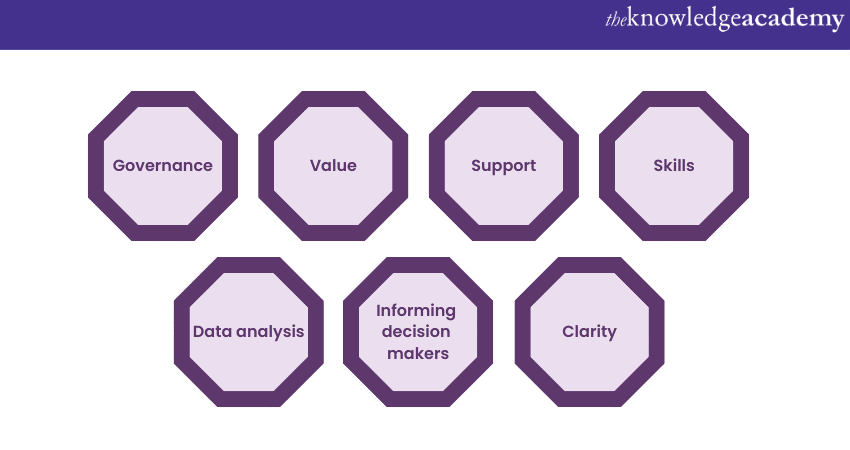
1) Governance: P3O establishes a governance structure that ensures effective oversight, control, and accountability throughout the organisation's Portfolios, Programs, and Projects.
2) Value: P3O helps maximise Project delivery by aligning initiatives with strategic objectives, prioritising Projects based on their value, and ensuring benefits realisation.
3) Support: P3O provides support to Project Managers, Program Managers, and other stakeholders, offering guidance, resources, and tools to enhance Project success.
4) Skills: P3O promotes the development and utilisation of Project Management skills, ensuring that teams have the necessary expertise to deliver Projects efficiently and effectively.
5) Data analysis: P3O enables data-driven decision-making by collecting and analysing Project-related data, providing valuable insights for performance monitoring, risk assessment, and resource optimisation.
6) Informing decision-makers: P3O facilitates informed decision-making by providing decision-makers with accurate and up-to-date information on Project status, risks, and resource utilisation.
7) Clarity: P3O brings clarity to the organisation's Project landscape by establishing standardised processes, procedures, and reporting mechanisms, ensuring transparency and clear communication across all levels of the organisation.
Design, implement, and work with a P3O model, by signing up for the P3O Practitioner Training Course now!
How can P3O be implemented?
Businesses can implement P3O practices utilising the following steps:
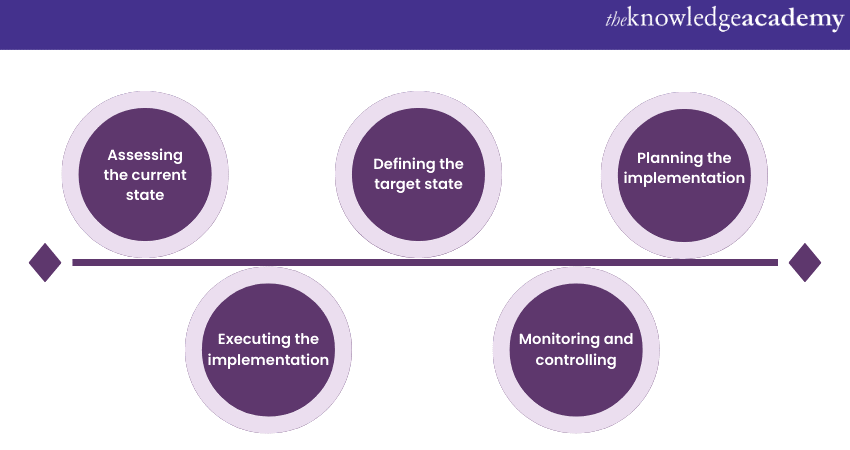
1) Assessing the current state: Prior to the implementation of P3O, organisations should assess their current Project Management practices, identify their strengths and weaknesses, and understand the existing challenges. This assessment helps them create a baseline for improvement and highlights areas that require attention.
2) Defining the target state: Organisations can define the desired future state for Project Management with the help of P3O practices. They can define this state by establishing goals, objectives, and the expected outcomes of implementing the framework. These measures thus ensure alignment with strategic objectives and address specific needs.
3) Planning the implementation: A well-defined implementation plan is crucial for an organisation’s successful adoption of P3O. They can develop a roadmap that outlines key activities, milestones, resource requirements, and timelines. Their plan will ensure a structured approach to implementation, considering factors such as organisational culture, change management, and stakeholder engagement.
4) Executing the implementation: This phase involves putting the implementation plan into action. Organisations can establish P3O functions, roles, and responsibilities, implement necessary processes and procedures, and provide training and support to Project teams. More importantly, a planned execution ensures a smooth transition to the new P3O framework.
5) Monitoring and controlling: Once the business has successfully implemented P3O, the organisation can proceed to monitor and control its effectiveness. They can assess performance against their defined targets, track key metrics, identify issues and risks, and take corrective actions. Furthermore, monitoring and controlling ensure continuous improvement, adherence to P3O principles, and the realisation of desired outcomes.
Conclusion
This blog has discussed What is P3O in detail and how it serves as a powerful management framework. Benefits of P3O enables organisations to effectively navigate the complexities of Portfolios, Programs, and Projects. The alignment of strategies, optimisation of resources, mitigation of risks, and facilitation of better decision-making, are all important parameters encapsulated in P3O practices. The model basically enhances the overall performance and helps businesses achieve their strategic objectives with confidence and success.
Make better-informed decisions for your business processes by signing up for the P3O Training Courses now!
Frequently Asked Questions
Upcoming Project Management Resources Batches & Dates
Date
 P3O® Foundation & Practitioner
P3O® Foundation & Practitioner
Mon 10th Jun 2024
Mon 8th Jul 2024
Mon 5th Aug 2024
Mon 2nd Sep 2024
Mon 7th Oct 2024
Mon 4th Nov 2024
Mon 2nd Dec 2024
Mon 6th Jan 2025
Mon 3rd Feb 2025
Mon 3rd Mar 2025
Mon 7th Apr 2025
Tue 6th May 2025
Mon 2nd Jun 2025
Mon 7th Jul 2025
Mon 4th Aug 2025
Mon 1st Sep 2025
Mon 6th Oct 2025
Mon 3rd Nov 2025
Mon 1st Dec 2025







 Top Rated Course
Top Rated Course


 If you wish to make any changes to your course, please
If you wish to make any changes to your course, please


